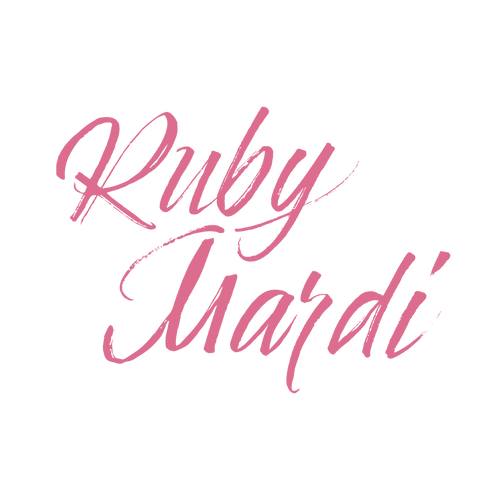What exactly is a karat of gold, what do the different numbers mean, and which is the best for you?
Deciding on metal choice may at first seem like a choice between colors of yellow, white, or rose; but if you’re going with gold, you'll also have to chose between 10k, 14k or 18k gold.
Each of these can make an impact on the appearance, durability and feel of your ring. They will also have a big impact on what you’re spending and how you can allocate your budget.
So let’s dive into what you need to know to choose the right gold for your engagement ring, wedding band or right hand ring.
What is gold?
Gold is a chemical element with the symbol Au (from the Latin "aurum") and atomic number 79. It is a dense, soft, malleable, and ductile metal with a bright yellow color, hence its nickname "the noble metal." Gold has been highly valued throughout history for its rarity, beauty, and usefulness in various applications.
Historically, gold has been used as currency, jewelry, and ornamentation. Today, it continues to be valued for these purposes, as well as for its use in electronics, dentistry, and as a hedge against economic uncertainty through investment in gold bullion or gold-backed securities.
Gold is relatively unreactive chemically, which means it does not corrode or tarnish easily. This property, along with its scarcity and enduring cultural significance, contributes to its status as one of the most sought-after and valuable metals in the world (along with Platinum and rhodium, also used in jewelry).
It can be found on every continent except Antarctica and is usually embedded in other minerals and rocks like granite and quartz. Gold is also found in the ocean, but it’s much more diluted and extremely difficult to mine, so it mostly goes untouched. Gold is one of the softest metals on earth, so it’s rarely used in its pure form, and is most often mixed with other metals (called alloys) to harden it for everyday use. Alloys are created by mixing two or more metals together, and the metals used with gold are copper, silver, nickel, and zinc. The combination of metals used depends on whether the tone of the gold is yellow, white, or rose.
Karat?
Karat is a measure of the purity of gold. The number before karat, or k, refers to how many parts out of 24 total parts are pure gold (e.g. 24k gold means 24 out of 24 parts are gold, so 24k is 100% pure gold).
10k gold - 10 parts gold to 14 parts alloy metals, 41.6% gold
14k gold - 14 parts gold to 10 parts alloy metals, 58.3% gold
18k gold - 18 parts gold to 6 parts alloy metals, 75% gold
The most noticeable difference between each karat option is the gold color. Because pure gold is naturally yellow in color, the higher the karat, the more yellow the metal will appear.
The differences in more details
18k Gold
Pros: highest purity for all practical jewelry use; has amazing depth of golden color; has a highest value
Cons: higher purity makes it a more expensive karat weight; it will show more scratches over time than other gold carats
This is the purest form of gold used extensively in jewelry. It has a rich, warm golden hue and is what people typically imagine when they think of gold jewelry. But because gold is naturally soft, and 18K gold is 75% pure, it can be scratched with daily wear and tear or even distorted if too much pressure is applied to the jewel. But 18K being "soft", it is also easily reworkable by a jeweller. Scratched can be "erased" by a polishing, and a distorted band can be reformed.
18K gold is significantly more expensive than 14K and 10K gold because it has high purity. A nice benefit of that high purity level is that there’s less risk of jewelry made with 18K gold causing skin irritations or allergic reactions.
14k Gold
Pros: very durable while still retaining a large amount of pure gold; a very good value
Cons: more likely to cause instances of irritation on sensible skins
14K is the most popular gold for rings and other wearable jewelry in North America. It is a perfect choice for those who don’t have a strong feeling about the level of pure gold present in their ring. It offers a classic gold appearance without ever looking overly yellow as 18K gold sometimes can.
The main benefit of 14K gold is that it’s highly durable and affordable. It’s an excellent and practical choice for engagement rings and wedding bands since those are staple pieces of jewelry and worn every day. Scuffs and scratches aren’t really an issue with 14K gold, but it could possibly exacerbate skin issues for those who have a copper, zinc, silver, nickel, or iron allergy.
10k Gold
Pros: very hard and durable; more affordable than other karat weights
Cons: contains more alloyed metals so more prone to cause skin issues; has a pale yellow color
10K gold is the least pure, least expensive, yet most durable, form of gold used widely in jewelry today. But its hardness makes it a bit more difficult to rework if you'd ever wish to transform your jewelry.
It has 58.3% alloy metal, which makes it likely to cause skin irritations or reactions in people allergic to nickel, silver, copper, zinc, or iron.
What type of gold is best for you?
Everyone has their own criteria, so the best type of gold for you will be based on various factors. When deciding on gold for an engagement ring or a ring that will be worn everyday, factors such as your career, activity level, aesthetic taste, budget, and skin sensitivity are all to be considered.
Most often, 14K gold offers an ideal combination of depth of color, strong durability, and reasonable affordability. 14K gold is also often considered to be the best formulation for rose gold and white gold. This is because the percentage of alloy mixed with pure gold creates a lovely, warm rose gold when mixed with copper or a crisp, icy white gold when mixed with silver or nickel.
The 18K versions of rose gold and white gold may contain too much yellow gold at 75% purity that prohibits the desired color appearance for some. Rose gold and white gold both resist tarnishing over time, but white gold will need re-application of rhodium to maintain its icy appearance while rose gold will maintain its shine for a lifetime. 14k white gold and 18k white gold with rhodium plating will initially look the same.
But if you like a rich, golden color, opt for 18-carat gold. Bear in mind, however, that this type of gold is softer and could become scratched if worn more regularly during more strenuous activities (nothing a polish can't fix! - In fact, 18K gold can easily be reworked). It's also a more expensive option than 14K gold, but it's more hypoallergenic if that's an issue for you.
You still have a question?
Please get in touch with our team!
CUSTOM YOUR UNIQUE JEWEL AT RUBY MARDI 🖤
We create meaningful pieces of jewelry that you'll cherish for a lifetime!
Bespoke jewelry design is a fun process you'll enjoy from the beginning of the journey to the sparkling result you'll bring home.
Tell us about your project!


